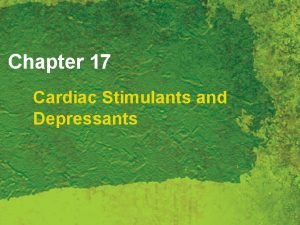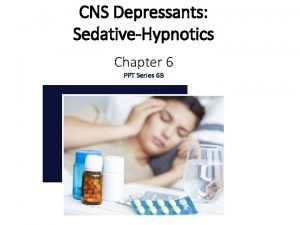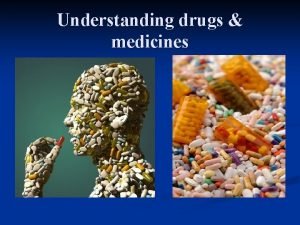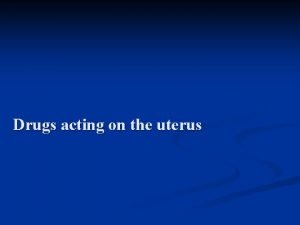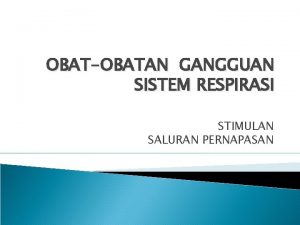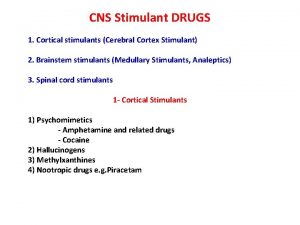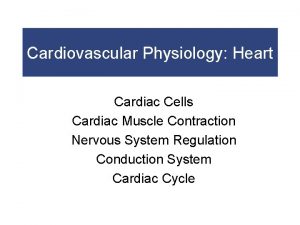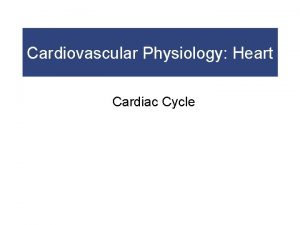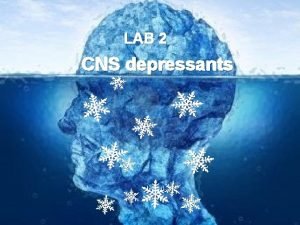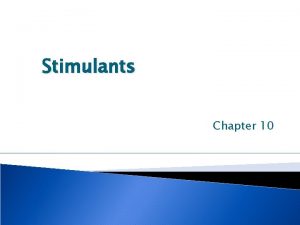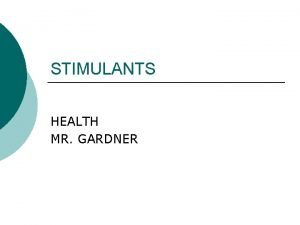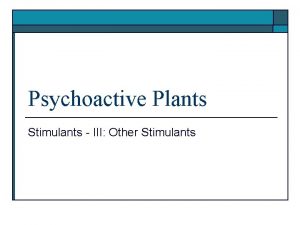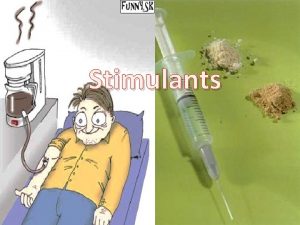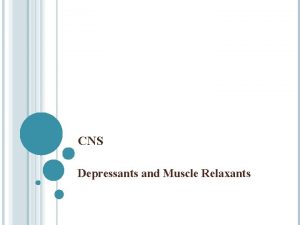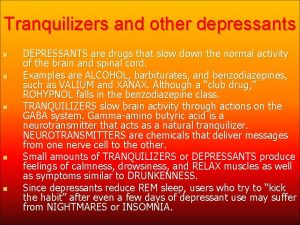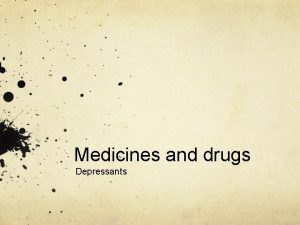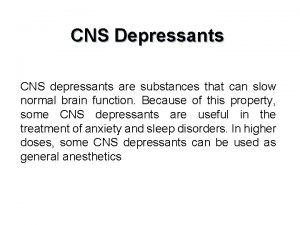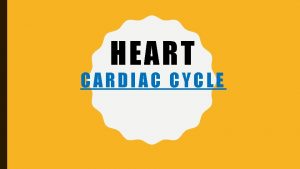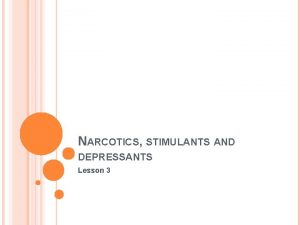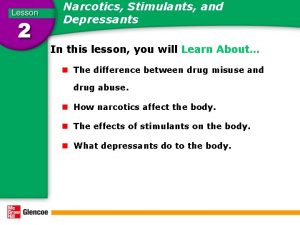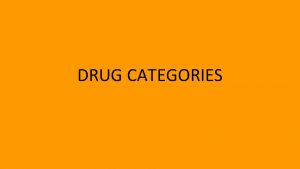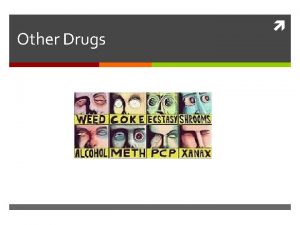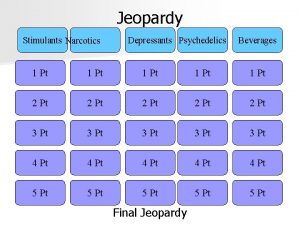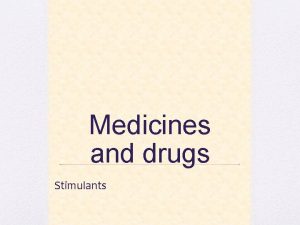Chapter 17 Cardiac Stimulants and Depressants The Heart



















- Slides: 19

Chapter 17 Cardiac Stimulants and Depressants

The Heart The heart is a four-chamber organ located in the upper left thoracic cavity. Purpose l l £ £ Pumps the blood around the body so that oxygen and nutrients can be distributed to all areas of the body Maintains the blood pressure at an acceptable level 2 Copyright 2007 Thomson Delmar Learning, a division of Thomson Learning Inc. All rights reserved.

Antiarrhythmics and Antianginals Cardiac illnesses l £ £ Cardiac stimulants Cardiac depressants 3 Copyright 2007 Thomson Delmar Learning, a division of Thomson Learning Inc. All rights reserved.

Treatment of Heart Failure Cardiac glycosides l £ £ Digoxin Treat arrhythmias 4 Copyright 2007 Thomson Delmar Learning, a division of Thomson Learning Inc. All rights reserved.

Digoxin Decreases electrical conduction Prolongs refractory period Increases the force of the myocardial contraction l l l £ Positive inotropic action 5 Copyright 2007 Thomson Delmar Learning, a division of Thomson Learning Inc. All rights reserved.

Digoxin: Dose Considerations Duration of action Method of administration Other l l l £ £ £ Physical size of the client Other medications Renal or hepatic function Advanced age Presence of other illnesses 6 Copyright 2007 Thomson Delmar Learning, a division of Thomson Learning Inc. All rights reserved.

Antiarrhythmics and Antianginals Require a digitalizing dose l £ £ To bring serum levels to a therapeutic level All glycosides have a low therapeutic level 7 Copyright 2007 Thomson Delmar Learning, a division of Thomson Learning Inc. All rights reserved.

Antiarrhythmics and Antianginals: Side Effects Gastrointestinal effects l £ £ £ Nausea and vomiting Anorexia Diarrhea Cardiac effects l £ 8 Cardiac arrhythmias (continues) Copyright 2007 Thomson Delmar Learning, a division of Thomson Learning Inc. All rights reserved.

(continued) Antiarrhythmics and Antianginals: Side Effects Neurological effects l £ £ £ Restlessness Irritability Drowsiness Vision changes Headache 9 Copyright 2007 Thomson Delmar Learning, a division of Thomson Learning Inc. All rights reserved.

Cardiac Glycoside Toxicity l Predispose to cardiac glycoside toxicity £ £ £ 10 Hypokalemia Renal impairment Rapid IV administration (continues) Copyright 2007 Thomson Delmar Learning, a division of Thomson Learning Inc. All rights reserved.

(continued) Cardiac Glycoside Toxicity l Treatment £ £ £ Stop the drug Physical assessment Check potassium level u £ Administer if needed Monitor heart rate u Administer antiarrhythmics 11 Copyright 2007 Thomson Delmar Learning, a division of Thomson Learning Inc. All rights reserved.

Antiarrhythmic and Antidysrhythmic Drugs l Grouped together according to their similar actions 12 Copyright 2007 Thomson Delmar Learning, a division of Thomson Learning Inc. All rights reserved.

Antiarrhythmics and Antianginals: Drug Action l Work three ways: £ £ £ Decrease the automaticity of cardiac tissues in the ectopic sites Alter the rate of conduction of electrical impulses through the heart. Alter the refractory period of cardiac muscle between consecutive contractions 13 Copyright 2007 Thomson Delmar Learning, a division of Thomson Learning Inc. All rights reserved.

Antidysrhythmic Agents l l Group 1, 1 A, 1 B, 1 C: decrease the influx of sodium ions, stabilizing membranes Group 2: depress phase 4 in depolarization Group 3: prolong repolarization in phase 3 Group 4: depress phase 4 depolarization and prolong repolarization of phases 1 and 2 14 Copyright 2007 Thomson Delmar Learning, a division of Thomson Learning Inc. All rights reserved.

Beta-adrenergic Blocking Agents l l l Inhibit beta 1 and beta 2 sympathetic receptors Reduce heart rate Reduce contractility Decrease supraventricular and ventricular rhythms Decrease blood pressure 15 Copyright 2007 Thomson Delmar Learning, a division of Thomson Learning Inc. All rights reserved.

Antidysrhythmic Agents l Adverse effects £ £ l Cause bronchoconstriction Cause heart failure Examples: propanolol (Inderal), esmolol, bretylium tosylate (Bretylol) 16 Copyright 2007 Thomson Delmar Learning, a division of Thomson Learning Inc. All rights reserved.

Calcium Channel Antagonists l Reduce the influx of calcium into the cell: £ Prevention or reversal of spasms of the coronary blood vessels u u l Coronary artery dilation Reduction of myocardial oxygen consumption Example: verapamil 17 Copyright 2007 Thomson Delmar Learning, a division of Thomson Learning Inc. All rights reserved.

Adenosine l l l Slow conduction through the AV node Cardioverts paroxysmal supraventricular tachycardia (PSVT) Side effects £ £ Facial flushing Shortness of breath Headache Nausea and vomiting 18 Copyright 2007 Thomson Delmar Learning, a division of Thomson Learning Inc. All rights reserved.

Adrenergic or Sympathomimetic Drugs l l Affect alpha- or beta-adrenergic receptors Treat shock £ £ Mimic epinephrine and/or norepinephrine Cause increase in heart rate Cause vasoconstriction Reverse hypotension from shock u Cardiac or trauma 19 Copyright 2007 Thomson Delmar Learning, a division of Thomson Learning Inc. All rights reserved.
 Cardiac stimulants and depressants
Cardiac stimulants and depressants Cns depressants ppt
Cns depressants ppt Depressants affect the__________.
Depressants affect the__________. Cns depressants classification
Cns depressants classification Oxytocin uses
Oxytocin uses Respiratory stimulants
Respiratory stimulants Cortical stimulants
Cortical stimulants Cardiac cycle class 11
Cardiac cycle class 11 Cardiac output and heart rate
Cardiac output and heart rate Cardiac dullness
Cardiac dullness Sheep heart labeled
Sheep heart labeled Stars dogs plowhorses and puzzles
Stars dogs plowhorses and puzzles Hình ảnh bộ gõ cơ thể búng tay
Hình ảnh bộ gõ cơ thể búng tay Ng-html
Ng-html Bổ thể
Bổ thể Tỉ lệ cơ thể trẻ em
Tỉ lệ cơ thể trẻ em Voi kéo gỗ như thế nào
Voi kéo gỗ như thế nào Glasgow thang điểm
Glasgow thang điểm Chúa yêu trần thế
Chúa yêu trần thế Các môn thể thao bắt đầu bằng tiếng chạy
Các môn thể thao bắt đầu bằng tiếng chạy
